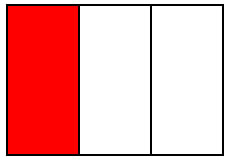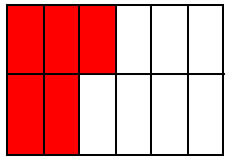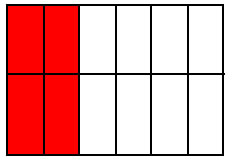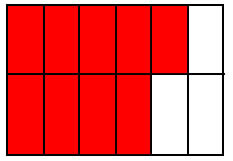| swiss-algebra-help.com |
 |
|||||||||
Adding FractionsAdding fractions implies that the concept of unitizing
The concept of partitioning goes along with it. The unit is defined by the denominator (the bottom number). UNIT = DENOMINATOR
The rules goes that you cannot add apples with oranges! you cannot add fractions with different denominators!
( or, conversely, you can add fractions which have the same denominator only! )
Do you see? the units (the denominators) which we used to divide our rectangle are different! How can we add the two fractions? Instead, we must first find a common ground to work on. In Algebra, this is found through the Least Common Denominator. So the following step lead us to "create" this common ground with a simple trick: to find the smallest common multiple of the two fractions and change the original partitioning where necessary.
Ahh! Now we can proceed adding fractions! Easy! the result is
One common mistake first algebra learners have is to mistakenly add two fractions which have no common unit (or denominator) like this 1/3 + 1/4 = 1/7 (wrong !) or adding numerator and denominator as in a normal addition, like this 1/5 + 2/3 = 3/8 (wrong !) Instead, you must do like this: 1/2 + 5/2 = 6/2 (correct!) So, mind the bottom numbers (the denominators)! Are they the same? If positive just add the top numbers together and leave the bottom numbers as you found them!
603. The examples which a beginner should choose for prac- Study and Difficulties of Mathematics (Chi- source: Memorabilia mathematica; or, The philomath's quotation-book - Moritz, Robert Édouard, 1868-1940
*We transformed 1/3 into 4/12. these two fractions are called
|
On the shore of a vast sea
|
|||||||||
|
Stay in touch with nature. It's full of mathematics! 
Enjoy This Site?
Then why not use the button below, to add us to your favorite bookmarking service? |
||||||||||
|
| Homepage| About Us |Study Tips |Contact | This Website is Powered by Site Build It! - and I would never use anything else.
|
||||||||||
|
| ||||||||||




